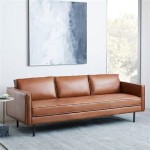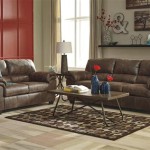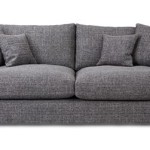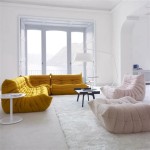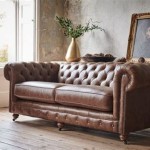Contemporary Sofa Sets: A Guide to Styling and Selection
Contemporary sofa sets represent a significant investment in the comfort and aesthetic appeal of a living space. They function as both a focal point and a practical seating solution, influencing the overall ambiance and usability of a room. The term "contemporary" in design, however, is not synonymous with "modern." While modern design typically refers to styles prevalent from the early to mid-20th century, contemporary design is fluid, evolving with current trends and reflecting the present moment. Choosing the right contemporary sofa set requires careful consideration of several factors, from material selection and size to style integration and long-term practicality.
Understanding the nuances of contemporary design principles is crucial for making an informed purchase. Generally, contemporary styles embrace clean lines, geometric shapes, and a minimalist aesthetic. This often translates to sofas with smooth, uncluttered surfaces, low profiles, and a preference for neutral color palettes. However, contemporary design also allows for pops of color and the incorporation of various textures to create visual interest. The key lies in achieving balance and harmony within the space.
The following discussion aims to provide a comprehensive overview of selecting and styling contemporary sofa sets, focusing on key aspects that contribute to both their visual impact and functional utility.
Materials: Balancing Aesthetics and Durability
The materials used in a contemporary sofa set directly impact its appearance, comfort, and longevity. The choice of upholstery fabric is particularly significant, as it determines the sofa's tactile feel and resistance to wear and tear. Several popular options cater to different needs and preferences.
Leather, a classic choice, brings a luxurious and sophisticated aesthetic to a contemporary living room. Full-grain leather, known for its natural markings and durability, develops a unique patina over time, adding to its character. Top-grain leather offers a smoother surface and more consistent color, while bonded leather, a more affordable alternative, is manufactured from leather scraps. Leather sofas generally require regular cleaning and conditioning to maintain their suppleness and prevent cracking.
Fabric upholstery presents a wider range of options in terms of color, texture, and pattern. Natural fibers such as cotton and linen offer breathability and a soft feel, but they are often more prone to staining and wrinkling. Synthetic fabrics like polyester and microfiber are more resistant to stains, fading, and wear, making them suitable for high-traffic areas or households with children and pets. Blended fabrics, combining natural and synthetic fibers, often offer a balance of comfort and durability. Performance fabrics, specially treated to repel liquids and resist stains, are gaining popularity for their enhanced practicality.
Beyond the upholstery, the frame material is equally important for ensuring the sofa's structural integrity. Hardwood frames, such as oak or maple, offer superior strength and durability compared to softwood frames. Kiln-dried wood is particularly desirable, as the drying process removes moisture and prevents warping or cracking over time. Metal frames, often made from steel, provide a modern, industrial-chic aesthetic and are known for their robustness. The sofa's suspension system, typically consisting of springs or webbing, also contributes to its comfort and support. Eight-way hand-tied springs are considered the gold standard, providing even weight distribution and exceptional durability, while sinuous springs offer a more affordable alternative.
Size and Configuration: Optimizing Space and Functionality
The size and configuration of a contemporary sofa set should be carefully considered in relation to the dimensions of the room and the user's lifestyle. A sofa that is too large can overwhelm a small space, while a sofa that is too small can appear insignificant in a larger room. Measuring the available space and creating a floor plan is essential for determining the optimal sofa size and layout.
Sectional sofas, comprising multiple modular pieces, offer versatility and can be configured to fit various room shapes and sizes. They are particularly well-suited for large living rooms or entertainment spaces, providing ample seating for guests. L-shaped sectionals are a popular choice, offering a comfortable corner seating area, while U-shaped sectionals provide even more seating and create a cozy, enclosed feel. Modular sectionals allow for customization and can be reconfigured to adapt to changing needs. The configuration of the sectional - whether the chaise is on the left or right side, for example - must also be considered in relation to the room's layout and traffic flow.
Sofa sleepers, also known as sleeper sofas or sofa beds, provide a dual-purpose seating and sleeping solution, making them ideal for guest rooms or small apartments. Contemporary sofa sleepers often feature sleek, streamlined designs and comfortable mattresses that are easily deployed and concealed. The mechanism for converting the sofa into a bed should be smooth and reliable. The mattress type, whether it is innerspring, memory foam, or air mattress, also affects the comfort level. It is important to consider the frequency of use and the intended guest when selecting a sofa sleeper.
Loveseats, smaller sofas designed to seat two people, are suitable for smaller living rooms or as part of a larger seating arrangement. They can be paired with armchairs or accent chairs to create a cohesive and balanced look. Recliners, offering adjustable reclining positions, provide enhanced comfort and relaxation. Contemporary recliners often feature hidden mechanisms and streamlined designs that blend seamlessly with the overall aesthetic.
Style Integration: Creating a Cohesive Aesthetic
Integrating a contemporary sofa set into an existing decor scheme requires careful consideration of color palettes, textures, and overall design principles. The sofa should complement the other furniture pieces, artwork, and accessories in the room, creating a harmonious and visually appealing space.
Color plays a crucial role in setting the mood and defining the style of a living room. Neutral color palettes, such as gray, beige, and white, are popular choices for contemporary sofas, as they provide a versatile backdrop for incorporating pops of color through accent pillows, throws, and artwork. Bold colors, such as navy blue, emerald green, or mustard yellow, can also be used to create a statement piece, but they should be balanced with neutral elements to prevent the space from feeling overwhelming. The color of the sofa should also complement the wall color and flooring. A contrasting color can create visual interest, while a complementary color can create a sense of harmony.
Textures add depth and dimension to a contemporary living room. Mixing different textures, such as leather, velvet, linen, and wool, can create a rich and inviting atmosphere. Consider incorporating textured throw pillows, such as those with geometric patterns or embroidered details, to add visual interest to the sofa. Adding a soft rug under the sofa can also enhance the comfort and warmth of the space. The texture of the sofa upholstery should also be considered in relation to the other textures in the room. A smooth leather sofa might be paired with a textured rug and woven throw pillows, while a textured linen sofa might be paired with smooth velvet pillows and a sleek coffee table.
Accessories play a vital role in completing the look of a contemporary living room. Throw pillows, strategically placed on the sofa, add comfort and visual interest. Choose pillows in a variety of sizes, shapes, and textures to create a dynamic and layered look. Coffee tables, placed in front of the sofa, provide a functional surface for drinks, books, and decorative items. Choose a coffee table that complements the style of the sofa and the overall aesthetic of the room. Lamps, placed on side tables or floor lamps, provide ambient lighting and add a touch of elegance. Choose lamps with sleek, modern designs to complement the contemporary style. Artwork, hung on the walls, adds personality and character to the room. Choose artwork that reflects your personal style and complements the color palette of the room.
Maintaining a consistent design aesthetic is crucial for creating a cohesive and harmonious space. Whether the overall style is minimalist, Scandinavian, industrial, or mid-century modern, the sofa should align with the principles of that style. Avoiding clashing styles and maintaining a consistent color palette and texture scheme will ensure a visually appealing and unified living room.

Designer Sofa Set Modern Puffy Sectional Design Luxury Furniture Sof Gkw Retail

Contemporary Living Room Sofa Set In Turkey Turkish Modern Sets

8 Modern Sofa Set Designs For Living Room Designcafe

Leisure Modular Leather Sofa Comfortable Durable Deep Contemporary Set Luxury China Living Room Furniture Modern Made In Com

Steel 12 Modern Style Contemporary Sofa Set Genuine Teakwood Furniture Manufacturer In Mumbai

Creative Quality Construct Luxurious Leather Sofa Set Modern Living Room Design Luxury Furniture

Buy Modern Country Design Teak Wood Sofa Set Teaklab

Luca Modern Sofa Set With Led Light Jubilee Furniture

Wooden Corner Sofa Modern Set Design Casa Furnishing

Modern Sofa Design Ideas Tips For Contemporary Home Interiors Beautiful Homes

